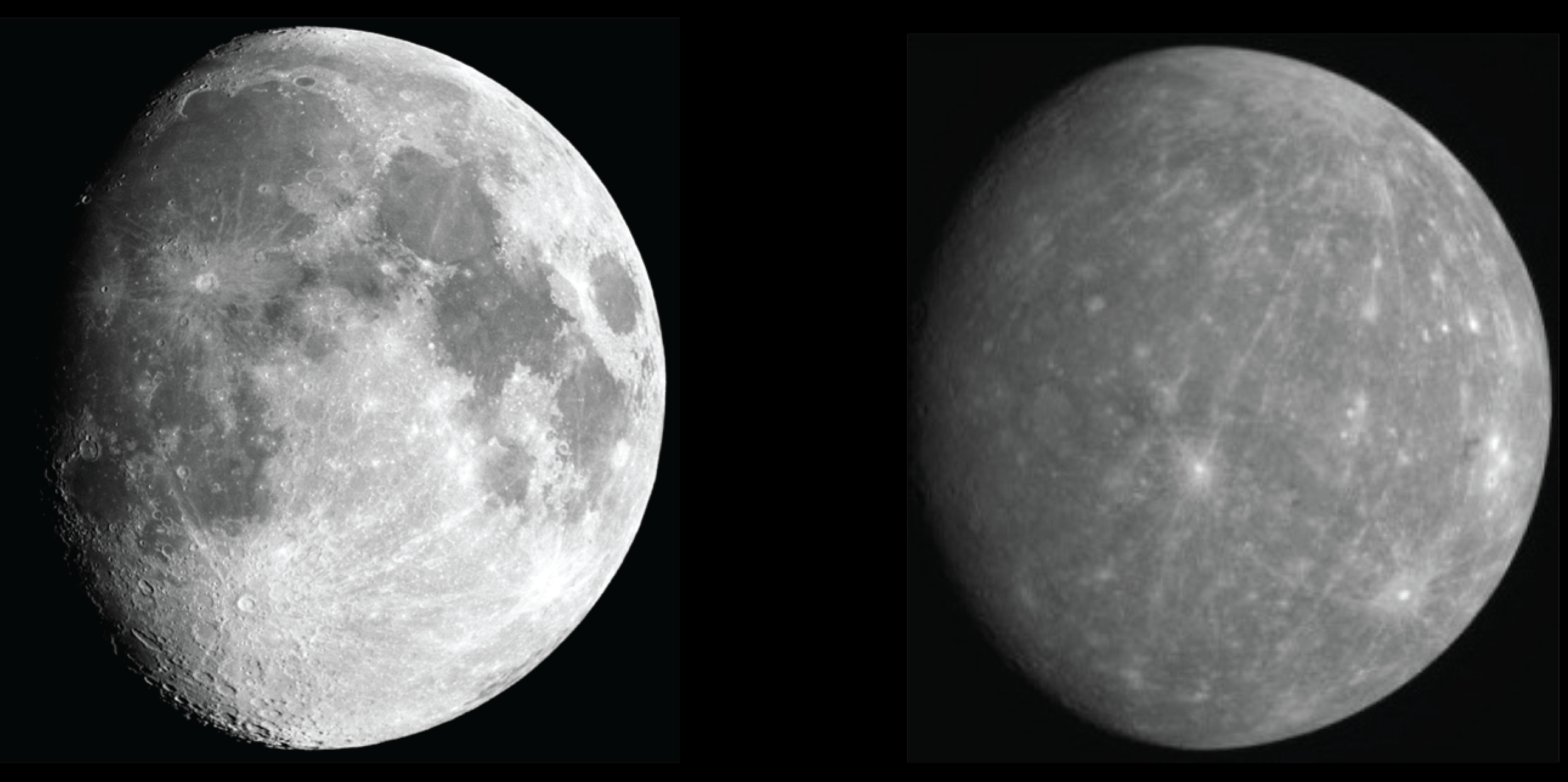Mercury does not have its own moons but it looks very similar to earth s moon

Mercury and Earth’s Moon: A Striking Resemblance


Mercury, the smallest and closest planet to the Sun, has often been compared to Earth’s moon due to their uncanny resemblances. While Mercury does not boast any moons of its own, the similarities it shares with Earth’s moon are indeed intriguing.
When we observe the two celestial bodies, we can immediately notice their striking resemblances in appearance. Similar to Earth’s moon, Mercury presents a heavily cratered surface. These craters are a result of numerous impacts that have taken place over millions of years. These impacts occur when small objects from space crash onto the surface of the planet or the moon. The craters can vary in size and shape, ranging from small bowl-shaped ones to large, circular ones. In addition to craters, both Mercury and the moon exhibit vast areas covered in dust and rock debris, known as regolith.
Another aspect where Mercury and Earth’s moon align is their geological history. Both bodies exhibit extensive basalt plains, known as maria, which are formed by ancient volcanic eruptions. The maria on the moon are more prominent and cover larger areas, whereas on Mercury they are relatively smaller. Nevertheless, the presence of maria on both bodies adds to their shared geological characteristics.
Aside from their visual similarities, Mercury and the moon also share their lack of substantial atmospheres. Unlike the Earth’s thick atmosphere, which protects and supports life on our planet, Mercury and the moon have exospheres – extremely thin layers of gases that barely qualify as an atmosphere. This thin layer contributes to the barren and desolate environments we observe on both celestial bodies.
While Mercury and the moon show remarkable likeness with their appearances and geological features, it is important to note their significant differences. One notable distinction lies in their orbits. Mercury, as a planet, orbits around the Sun, whereas the moon orbits around the Earth. Additionally, Mercury experiences extreme temperature variations, swinging from scorching heat during the day to freezing cold at night due to its proximity to the Sun. Earth’s moon, on the other hand, does not experience such extreme temperature fluctuations.
In conclusion, despite not having any moons of its own, Mercury bears a striking resemblance to Earth’s moon in terms of its heavily cratered surface, vast regolith-covered areas, and the presence of basalt plains. These remarkable similarities provide us with valuable insights into the geological processes that have shaped both celestial bodies.
Tags
Share
Related Posts
Quick Links
Legal Stuff

